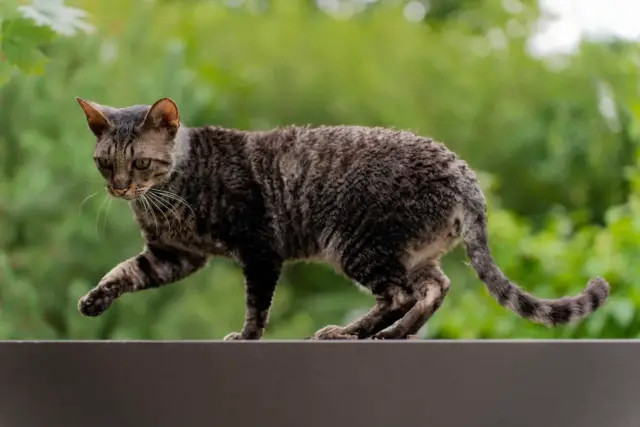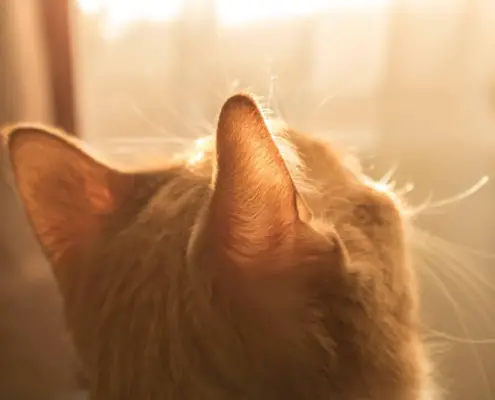
Cats have long been known for their stealthy nature. Whether they are silently stalking their prey or sneaking around the house in the dead of night, cats possess an innate ability to move with grace and precision. But what are the reasons behind this sneaky behavior? In this article, we will delve into the evolutionary basis of cat behavior and explore the fascinating world of feline stealth.
The evolutionary basis of cat behavior
To understand why cats are so sneaky, it is important to look back at their evolutionary history. Cats, as we know them today, descended from a long line of predatory ancestors. Over millions of years, they have evolved to become highly efficient hunters. This evolutionary process has shaped their behavior, including their stealthy nature.
The predator-prey relationship and stealthy behavior in cats
Cats are natural predators, and their prey often possess heightened senses. To successfully catch their prey, cats have developed stealthy behavior as a survival strategy. Their ability to move silently and blend into their surroundings allows them to get close to their prey without being detected. This stealthy behavior increases their chances of a successful hunt and ensures their survival in the wild.
Survival instincts and the need for secrecy
In the animal kingdom, survival is the ultimate goal. Cats, being instinctual creatures, have a strong drive to survive. Their sneakiness is a manifestation of this survival instinct. By remaining hidden and undetected, cats are able to avoid potential threats and dangers. This need for secrecy is deeply ingrained in their behavior and has been passed down through generations.
The role of genetics in cat stealthiness
Genetics play a significant role in determining a cat’s behavior, including their level of sneakiness. Some cats are naturally more stealthy than others due to genetic factors. Certain traits, such as a slender body, flexible spine, and long limbs, can enhance a cat’s ability to move silently and unnoticed. These genetic variations contribute to the diversity of cat behavior and explain why some cats are sneakier than others.
Environmental factors contributing to cat sneakiness
While genetics may influence a cat’s level of sneakiness, environmental factors also play a crucial role. Cats that grow up in environments where stealth is necessary, such as in the presence of larger predators or in densely populated areas, are more likely to develop and exhibit sneaky behavior. Their surroundings shape their behavior, and the need to remain hidden becomes a vital survival skill.
Domestication and the persistence of sneaky behavior in cats
Even though cats have been domesticated for thousands of years, their sneaky behavior has not been eradicated. Domestication has certainly softened some of their wild instincts, but their natural inclination to be stealthy remains intact. This is because the traits associated with sneakiness have proven to be advantageous for cats, even in domestic settings. Cats still possess a strong prey drive and can exhibit sneaky behavior when hunting or playing.
The advantages and disadvantages of cat sneakiness
Being sneaky has its advantages and disadvantages for cats. On one hand, their ability to move silently allows them to surprise and catch their prey more easily. It also helps them avoid potential predators and threats. However, being sneaky also means that cats may be perceived as untrustworthy or mischievous by their human companions. It is important for cat owners to understand that sneakiness is a natural behavior and should not be seen as a negative trait.
Debunking myths about cat sneakiness
There are many myths and misconceptions surrounding cat sneakiness. One common myth is that cats are intentionally sneaky to manipulate their owners. In reality, cats behave sneakily primarily because of their instincts and evolutionary history. Another myth is that all cats are equally sneaky. As mentioned earlier, genetics and environmental factors play a role in determining a cat’s level of sneakiness. It is important to dispel these myths and gain a better understanding of the true nature of cats.
Appreciating and understanding the sneaky nature of cats
Cats are fascinating creatures with a rich evolutionary history. Their sneakiness is not a result of mischief or manipulation, but rather a survival strategy that has been honed over millions of years. By appreciating and understanding the reasons behind their sneaky behavior, we can develop a deeper bond with our feline companions. So the next time you catch your cat silently stalking its prey or disappearing into the shadows, remember that it is simply following its instincts and embracing its evolutionary heritage.
If you found this article informative, consider sharing it with other cat lovers who might be curious about the evolutionary reasons behind their feline’s sneaky behavior.
If you enjoyed my article, I would appreciate you sharing it with your network.

Sima Ndlebe
Sima writes for CatBuzz. He is interested in Cats, Health and Fitness, and Entrepreneurship.
Published: 30 October 2023




